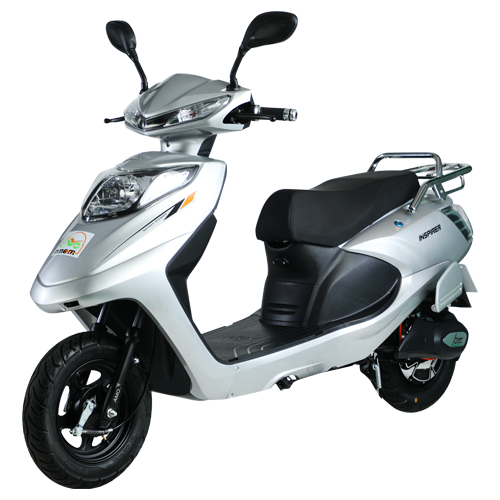India is listed as the second-most polluted country in the world, just behind China. The dense population, large industrial complex running on fossil fuel, massive deforestation, and a huge number of fossil-fuel-powered ICE vehicles are together making life toxic in the country. Effects of climate change and global warming have already brought drastic impacts to the country. Severe flooding, drought, and change in weather patterns are early signs of a greater catastrophe. They are also fuelling the migration of people from the coastal regions. In such adverse conditions, electric vehicles (EVs) are seen as a major combatant. Both the government and manufacturers are finding EVs a good alternative that can contribute to a greener India. Is this, however, the case?
Can electric vehicles bring substantial greenery to India?
Even though the government has implemented considerable action plans and incentives for EV manufacturers, the number of EVs on the road today is considerably below the average required to be considered significant. It is true that the number of two-wheeler EVs like electric scooty and electric bikes in India has grown significantly in recent days; but, they simply can’t make the ICE (Internal Combustion Engine running on petrol) bikes and scooters obsolete. In 2022, the number of electric vehicles will only make up a small portion of the total number of ICE vehicles. So, it is far from anywhere close.
The situation may only change by the year 2030 when the number of electric cars, electric bikes, e-scooters rises and crosses the 100 million mark. Again, by that time, it would be nice to see a drastic reduction of ICE vehicles, which can only happen with conscious customers; customers who care for the planet and ecology.
 Another big hurdle for the EV industry is the life cycle of vehicles and batteries. To make ICE vehicles obsolete, manufacturers need to increase the life cycle of EVs. Electric scooters and bikes are much lighter than petrol scooters and bikes, making them more prone to wear and tear. Furthermore, the battery life cycle of e-bikes in India is typically shorter than 10 years, with some batteries lasting as little as 6-8 years. This may turn into a concern for the budget-oriented customers of India who are less likely to switch to EVs. Reducing the price of EVs and increasing their life cycle is considered the biggest challenge for manufacturers and the scientific community.
Another big hurdle for the EV industry is the life cycle of vehicles and batteries. To make ICE vehicles obsolete, manufacturers need to increase the life cycle of EVs. Electric scooters and bikes are much lighter than petrol scooters and bikes, making them more prone to wear and tear. Furthermore, the battery life cycle of e-bikes in India is typically shorter than 10 years, with some batteries lasting as little as 6-8 years. This may turn into a concern for the budget-oriented customers of India who are less likely to switch to EVs. Reducing the price of EVs and increasing their life cycle is considered the biggest challenge for manufacturers and the scientific community.
So, going by these facts, it only implies that India needs huge steps to make EVs a robust mobility alternative. The government also needs to support the manufacturers for a good amount of time. In turn, manufacturers have to rely heavily on technologies to make EVs more accessible, affordable, and practical in the long term.
In addition to electric mobility, the government also needs big action plans to reduce the dependency on fossil fuels that are powering the giant industrial complexes and other machinery. This must be done in tandem with the introduction of electric vehicles; otherwise, fighting climate change and making India greener with electric vehicles will be ineffective.
Electric bikes and electric scooters in India to stay important:
The era of change is already here. Technology can be the biggest partner to overcome pollution and climate change. EVs such as e-scooter and electric scooty in India are crucial; nevertheless, buyers must be educated about the growing threat of pollution and climate change. Then only, they can adapt to electric vehicles.
Subsidies for electric cars, according to auto experts, are a pointless alternative because the cost of electric cars would be significantly higher, making subsidies ineffective for manufacturers. Electric cars are only affordable to wealthy folks. Hence, people need to understand the importance and effectiveness of electric bikes and electric scooters in India although their current life cycle may not be high enough.
In the end, India is still in the early stages of EV adoption. Electric vehicles will take more time to develop to their full potential, and only then will they be a viable alternative to ICE vehicles. It is not a wise option to simply remove or outlaw ICE vehicles off the road. The government must collaborate with producers while conducting consumer awareness initiatives.
10 million or even 100 million electric vehicles will not be enough to make India greener. However, if India's reliance on fossil fuels is reduced, including industrial use of fossil fuels, and ICE vehicles are phased out in considerable numbers by 2030, signs of a greener India will be seen. And, this phase must see the adoption of EVs by hundreds of millions.
© AMO Mobility Solutions Pvt. Ltd, All Rights Reserved | Powered by Amo Electric Bikes